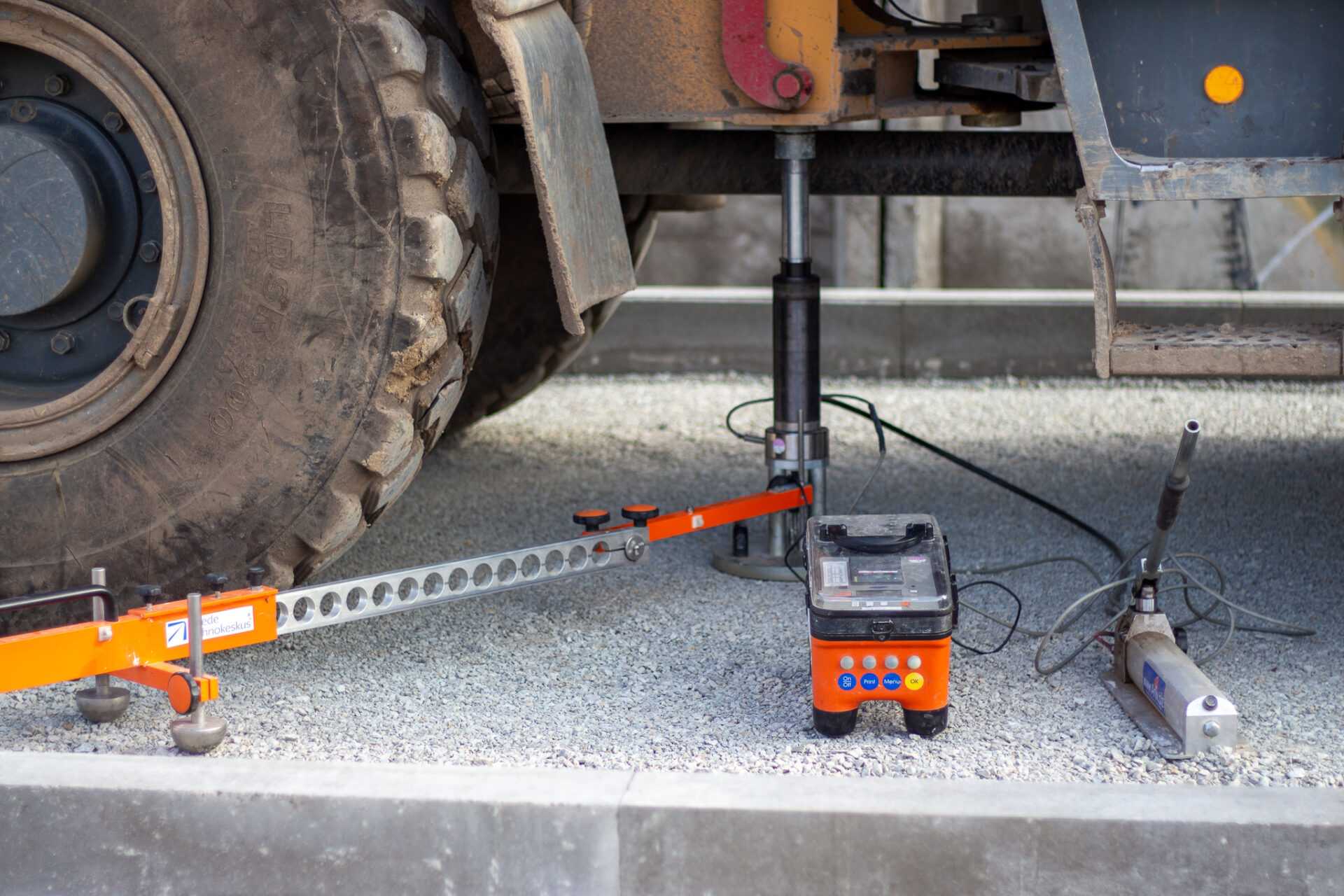
- Services
- Road measurements
- Road bearing capacity (FWD)
- Roughness (IRI & IRI4)
- Rut Depth Measurements
- Pavement Skid Resistance Measurements
- Asphalt paving quality mapping (TGS)
- ITS & road information systems
- Road and Traffic Cameras
- Road Weather and Road Weather Stations
- Traffic counting
- Variable Message Signs
- Weigh-in-motion
- Trainings
- Contact
ENG
- Services
- Road measurements
- Road bearing capacity (FWD)
- Roughness (IRI & IRI4)
- Rut Depth Measurements
- Pavement Skid Resistance Measurements
- Asphalt paving quality mapping (TGS)
- ITS & road information systems
- Road and Traffic Cameras
- Road Weather and Road Weather Stations
- Traffic counting
- Variable Message Signs
- Weigh-in-motion
- Trainings
- Contact
ENG
SERVICES
Plate load test
Since 2017, Teede Tehnokeskus has been carrying out plate load tests, which make it possible to assess the load-bearing capacity of the subgrade layers of the road under construction or reconstruction already during construction.
Many road owners are familiar with the situation where the FWD bearing capacity indicators measured on the pavement at the completion of construction have turned out to be insufficient, which in turn manifests itself in rapidly forming ruts and a shorter lifespan of the pavement. Analysis of these measurements has pointed to problems in the layers just below the coating. Most often, the reasons for low bearing capacity are insufficient drainage and insufficient compaction of the foundation layers, but other choices also play a role – both in terms of materials used and technology.
The plate load test is a widely used measuring method in the world to determine the bearing capacity of the layers to be built immediately after each layer is built, allowing measures to be taken to achieve the desired bearing capacity already during construction. The test is carried out according to DIN 18134:2012-04 or EVS 934:2016. The test is accredited.
Seda veebilehte külastades ja kasutades nõustud sellega, et AS Teede Tehnokeskus kasutab küpsiseid. Nõustun REJECTManage consentPrivacy Overview
This website uses cookies to improve your experience while you navigate through the website. Out of these, the cookies that are categorized as necessary are stored on your browser as they are essential for the working of basic functionalities of the website. We also use third-party cookies that help us analyze and understand how you use this website. These cookies will be stored in your browser only with your consent. You also have the option to opt-out of these cookies. But opting out of some of these cookies may affect your browsing experience.Necessary cookies are absolutely essential for the website to function properly. This category only includes cookies that ensures basic functionalities and security features of the website. These cookies do not store any personal information.Any cookies that may not be particularly necessary for the website to function and is used specifically to collect user personal data via analytics, ads, other embedded contents are termed as non-necessary cookies. It is mandatory to procure user consent prior to running these cookies on your website.

